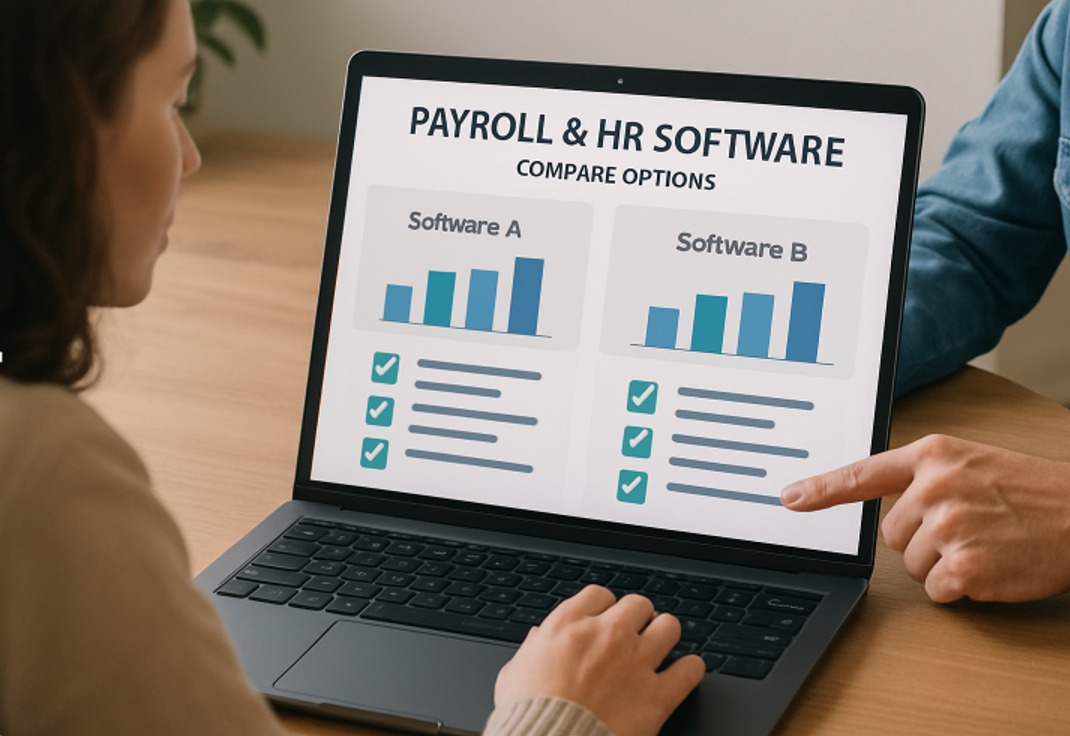Choosing Payroll and HR Systems: Making Smarter Decisions for Small Businesses

Small Business Payroll and HR: Today’s Landscape
Small businesses face a rapidly evolving landscape when it comes to payroll and HR systems. Automation, compliance requirements, and remote work trends have placed new demands on software. Owners and managers are no longer just looking for a way to process payroll; they want integrated tools that manage tax filings, benefits administration, employee self-service, and much more. The expansion of these needs makes choosing the right solution vital to both current operations and future growth. Each platform offers unique features, costs, and user experiences. However, successful small businesses understand that it’s important to read beyond the reviews—digging deeper than star ratings to understand how a system aligns with specific business workflows, compliance risks, and customer support expectations. Taking the time to evaluate these factors carefully can save both time and resources in the long run. Finding a system that truly fits your business can make day-to-day operations smoother and help support sustainable growth.
What to Look for in Payroll and HR Systems
When evaluating payroll and HR software, small businesses should prioritize the essential features first. At a minimum, the system should handle payroll processing, tax calculations, and compliance with local, state, and federal regulations. User-friendly interfaces, employee portals, and customizable reporting options increase day-to-day efficiency. Consider whether the solution supports direct deposit, time tracking, PTO management, document storage, and onboarding workflows. Security and data privacy must also sit at the top of your checklist for any provider.
Flexibility is increasingly vital, especially if you expect your business to grow or your workforce to become more distributed. Select platforms that can adapt to your needs and have a proven track record of frequent updates and responsiveness to regulatory changes.
Comparing Features vs. Price: What Matters Most?
The best payroll and HR systems strike a balance between feature richness and affordability. While every business aims to optimize cost, selecting the lowest-priced system may shortchange you on functionality or customer service, costing more in the long run. Carefully map core features against monthly or annual fees—noting hidden costs like setup charges, integrations, and per-employee pricing. Free trials and demos can help you assess the value before making a commitment. For many, the sweet spot is a platform that offers essential automation and compliance without locking you into expensive, long-term contracts.
User Experience and Support: Why They Matter
A payroll or HR system is only as good as its ease of use and the support behind it. If your team struggles to use a platform, you’ll waste valuable time and risk errors. Look for solutions that feature intuitive dashboards, clear documentation, and robust user communities. Equally important is responsive customer support—that means live help via chat, phone, or email, not just generic FAQ pages. Quality support minimizes disruption during tax season or when navigating complex compliance updates.
Integrating Payroll with Other Business Tools
Integration is more than a convenience—it’s a catalyst for efficiency and accuracy. The most effective payroll and HR systems seamlessly connect with general ledger systems, benefits administration, scheduling software, and employee performance management platforms. Look for open APIs, standard accounting integrations, and flexible import/export options to reduce data duplication and human error. Choosing a system that fits naturally into your broader tech stack supports automation and enhances your team’s productivity.
The Role of Cloud-Based Solutions and Security
Cloud-based payroll and HR solutions dominate the market today due to their accessibility, scalability, and security. Employees and administrators can work from anywhere, supporting both in-office and remote setups. Modern cloud providers utilize advanced encryption, two-factor authentication, and regular backup processes to protect sensitive payroll data. When vetting software, scrutinize the provider’s security certifications, breach response plans, and track record with uptime. Regular compliance updates are a bonus and essential for businesses managing sensitive employee information.
See also: Maximizing E-Commerce Success With Data-Driven Marketing 3512573690
Future-Proofing Your Business with the Right Platform
Adopting a future-proof HR or payroll platform means selecting software that can grow with your team, adapt to regulatory changes, and evolve with the tech landscape. Consider providers with robust development roadmaps, transparent upgrade policies, and a reputation for introducing new features in response to user feedback. Prevent your system from outgrowing its capabilities after only a few years by investing in flexibility and scalability from the outset..
FAQs: Common Challenges When Switching Systems
- How difficult is it to migrate payroll data? Most cloud payroll providers offer onboarding services, but advance planning and data cleansing are still necessary for a smooth transition.
- What about data security during migration? Select vendors that offer transparent migration processes, secure data transfer protocols, and comprehensive documentation.
- Will my staff require training? Yes, factor in both initial training and access to ongoing support to minimize confusion and mistakes.
- Can payroll integrate with my accounting or time-tracking tools? Leading HR systems support API-based integrations; double-check that your preferred vendor is compatible with your current stack.
- How can I stay compliant with changing payroll laws? Opt for providers known for regular compliance updates and check for features that automate tax and legal changes relevant to your location.
Conclusion
In today’s fast-changing business environment, choosing the correct payroll and HR system is no longer just an operational decision; it is a strategic one. By carefully evaluating features, usability, support, integrations, and security, small businesses can select a platform that not only simplifies daily tasks but also supports growth, compliance, and employee satisfaction. Staying informed about emerging trends and technology ensures your business remains agile and competitive. Ultimately, the right system becomes more than software; it is a foundation for efficiency, accuracy, and long-term success.




